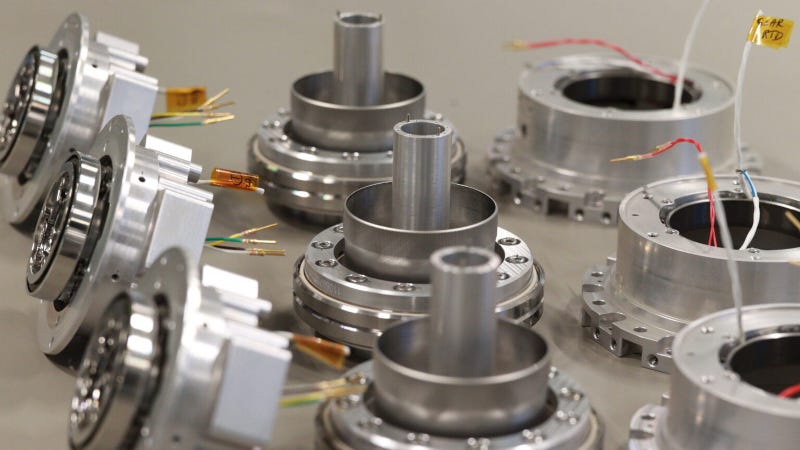MGAP Addresses Evolving Needs of the Satellite Communications Market
Redwire Preparing Antenna Pointing Mechanism for LEO Satellite Constellations
A Multiaxial Gimbal for Antenna Pointing (MGAP) that addresses the evolving needs of the satellite communications market is under development by Redwire at its Luxembourg facility.
Developed by Redwire’s team under the LuxImpulse contract with the Luxembourg Space Agency and support from the European Space Agency, MGAP is a gimbal system for accurately directing antennas for satellites in low-Earth orbit (LEO) constellations. The system can also be used for pointing of thrusters, cameras, or solar arrays.
Redwire engineers successfully completed a recent testing campaign with the MGAP engineering model, a critical step in validating its readiness for the harsh conditions of space.
Key achievements of the recent testing campaign include random and sine vibration tests, shock tests, thermal vacuum (TVAC) testing, and successful functional testing. The testing campaign also marked the successful debut of Redwire’s analog Stepper Motor Control Unit, developed to enhance the system’s precision and reliability. Prior to achieving the recent testing milestones, MGAP was integrated at Redwire’s ISO7 cleanroom in Luxembourg.
MGAP builds on Redwire’s expertise in robotic actuators developed for the STAARK robotic arm, a modular and easily customized robotic system designed for various on-orbit robotics applications, and Solar Array Drive Assembly Mechanisms.
Following successful mechanical environmental testing, MGAP will now undergo electromagnetic compatibility testing and pointing accuracy validation.




The dual use of MGAP for both antennas and thrusters is clver. Most gimbal systems seem locked into one function, but Redwire's approach gives operators flexibilty as constellation needs shift. The sucessful TVAC testing is reassuring given how brutal the thermal swings can be in LEO. Wonder if the pointing accuracy will hold up across multiple deployments or if they're planning for some drift calibration over time?